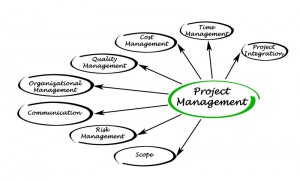 Development of software inherently carries risks, so it should come as no surprise that every developer and product manager at an ISV or any company creating an application has to address these threats. How successful our business can be will depend on how well we mitigate these risks.
Development of software inherently carries risks, so it should come as no surprise that every developer and product manager at an ISV or any company creating an application has to address these threats. How successful our business can be will depend on how well we mitigate these risks.
What causes most IT project failures?
- Inadequate planning
- Poor grasp of the development process
- Lack of clarity at the managerial framework level
The Standish Group issues a report in 2009 that said 31.1% of projects are canceled before completion and 52.7% of projects bust their budgets by costing 189% of the original estimates.
First we have to identify the risks that are apparent even before we begin to design the application. Next we’ll need to figure out what risks are unique to this type of project. As we move forward with the software development, we’ll need to calculate how to mitigate those risks. The following are some of the more common risks to any project:
Team members don’t know their responsibilities
Don’t just tell each team member their responsibilities, add it to your PM software – and share it with them. Include details on what aspects of the project each will be held accountable, and on what parts they will be consulted and informed.
Key personnel pulled off project at inopportune times
Make it clear to higher level managers the importance these team members have to the project – and exactly how losing them will affect meeting project milestones.
Missed deadlines
Break the project into manageable portions and build in some extra time. Developers know you’ve padded these milestone deadlines, so be careful that you don’t pad the date too much or they will ignore every deadline for the “real” deadline.
Scope creep
Plans always change, so make sure everyone understands this is a good thing. Once a problem is found, (see below), it’s in everyone’s best interest to fix it. As the project advances, your customer may realize they’ve been asking for the wrong thing. Forcing them to accept something they don’t want is not the answer.
Often enough – too often, most developers would say – features are added when the project is well underway. Constant communication can keep this from becoming a major problem and distraction.
Get feedback from developers, company executives and the customers on a regular basis to stay on top of scope creep. It’s going to happen, so don’t wait for it to become an insurmountable problem.
Problem? What problem? I don’t see no stinkin’ problem!
Weekly meetings with developers on the team will reveal problems early in the project timeline. Through these meetings, a PM can make sure team members are keeping up with the timeline and what issues have to be solved to get back on track.
The PM needs to find out about problems and missed milestones immediately before the timeline is so disrupted that the project deadline can’t be met.
Different locations and time zones challenge collaboration
Even the smallest ISV may have multiple offices across the country by virtue of key team members actually living in different cities. With outsourcing for development work a common practice – often offshore – the ability for developers, executives and the PM to communicate in real time is curtailed if not actually made impossible. The PM has to stay on top of this to make sure collaboration is possible and happens.
I hate you!
Collaboration can be made impossible if team members don’t trust each other. Communication may be so bad that team members are openly hostile to each other. The PM needs to check with each developer to be made aware of these communication problems. Professional or personal problems may be interfering with the project’s completion, so they must be addressed.
End Users Fail to Adopt
You may believe the project is complete once it’s delivered to your customers. But what if end users reject the application or a prototype that they were shown. Business sers might discover that the interface doesn’t allow them to complete tasks, or it’s just plain buggy. They might see your application as stifling their innovation, or reducing their productivity.
But these are just a fraction of the problems that any project might have. Anna Mar identified 130 different risks under 22 categories – and most PMs probably can add even more to her list. (You’ll need to head over to her blog on simplicable to see all 130 project risks in her list.)
And for more on best practices for project managers, check out Fran Sales’ Tech Target blog.
Izenda’s solution experts are familiar with many of the risks of software development, so they can help mitigate problems encountered with integrating a business intelligence solution.
Follow Izenda on social media for the latest on technology and business intelligence:
![]()
![]()
![]()

